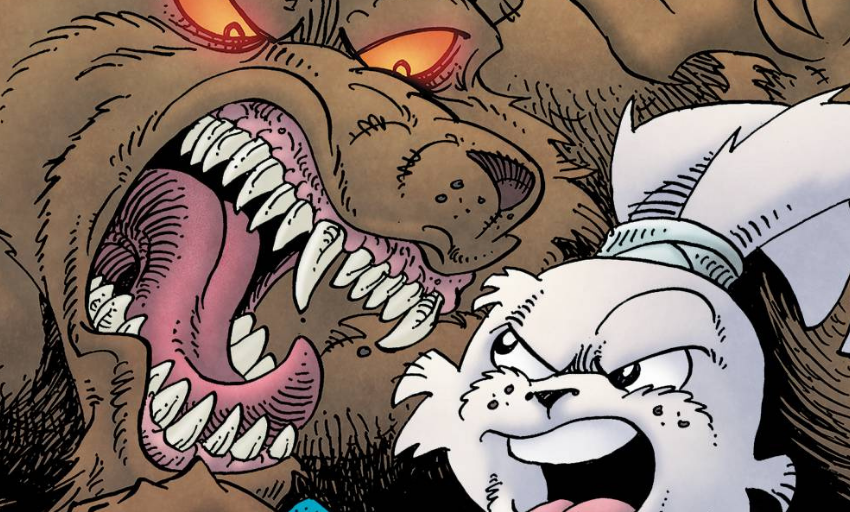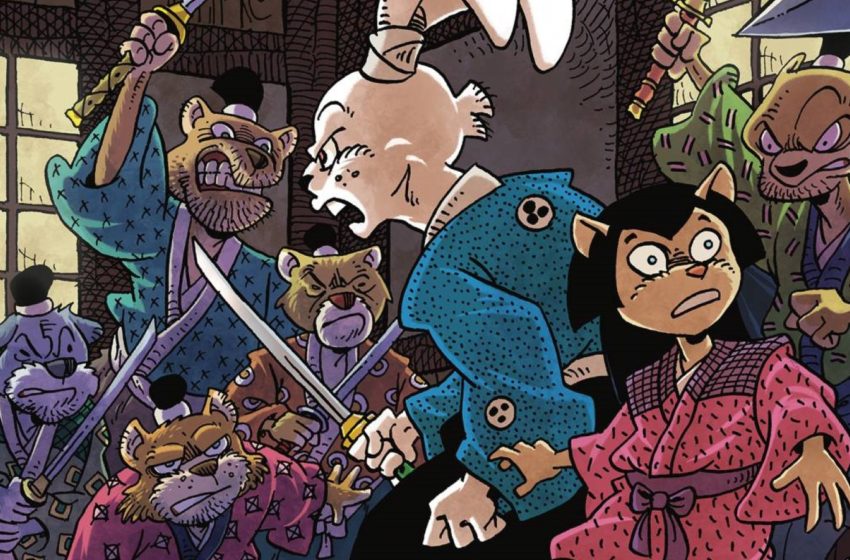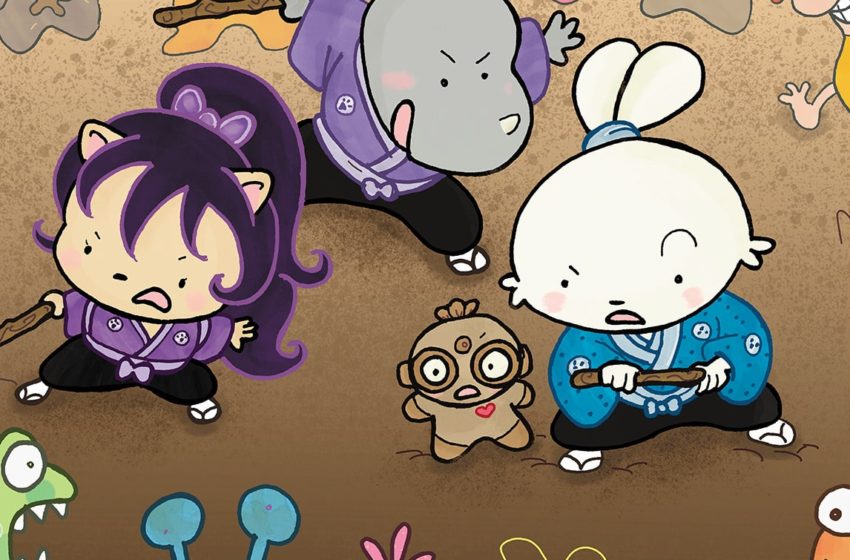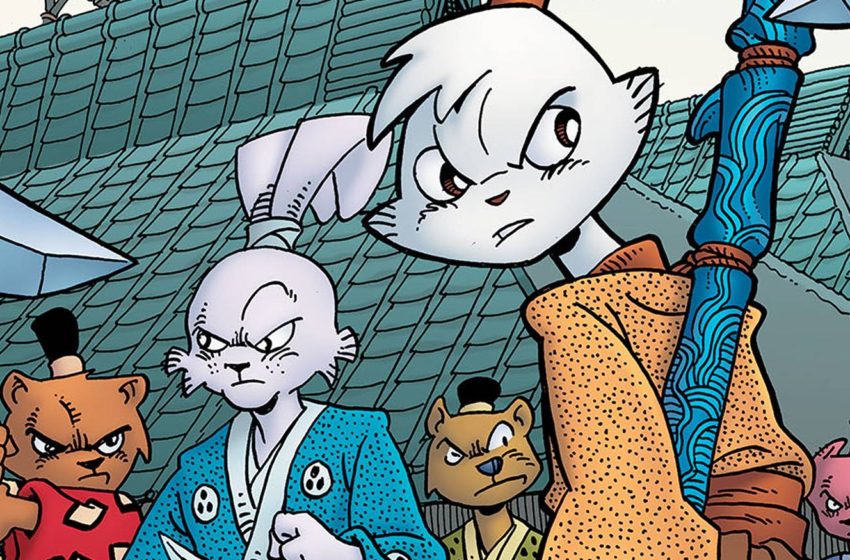The Tengu War comes to its conclusion as Usagi, Sojobo, Lady Nozomi and the whole Tengu clan fight to retain their honor in Stan Sakai and Hi-Fi Design’s Usagi Yojimbo #18.
After binge-reading the previous 255 issues of Usagi Yojimbo over the past few months, I think what strikes me the most about Sakai’s work is the simplicity. These are not an intricate clockwork of plots and paneling, they are restrained, classic, evoking Prince Valiant more than Valiant comics.
But Sakai, one of the true masters of the craft, makes that an asset.
Someone mentioned to me recently that it felt like a rite of passage for any comics critic to get deep into Carl Barks or Don Rosa’s “duck comics.” These are stories for children. They star the extended family of Donald Duck. They are not high-brow. And yet? They are sophisticated works of sequential art, peak cartooning that appeals to the youngest child, as well as a grandparent sharing the joy. If anyone’s name can be spoken in the same breath, it is Stan Sakai.
Look at the paneling in Usagi Yojimbo #18. Sakai isn’t pushing the boundaries of the medium here. He uses the same layouts draftsmen like Jack Kirby perfected. At most, six panels per page. Two, maybe three panels per row. Three rows a page. Evenly distributed, thick white gutter, easy to follow. While some cartoonists will stuff the page, drawing the eye to and fro, trusting the letterist to guide the reader, Sakai goes a different route. When we talk about lowering the barrier to entry for comics, this is what we mean. This is a comic I could, and eventually will, give to my son. The clear, almost contemplative layouts let a reader soak in the story and get absorbed into the world. It does what a good book should.
The other advantage the paneling in Sakai’s work has is in aiding the rhythm of the storytelling. A rule in scripting is that each panel should be one action. In some modern comics, that action is talking. Extensively. Dropping dense dialogue to explain the story so protagonists can progress though the plot, converging in a clean conclusion. As much as some modern writers want it to be, that talking is not a free action. It puts strain on an artist to have one panel convey a paragraph’s worth of emotion.
Sakai knows this. Writing, drawing and lettering this book means he wants it to be as easy on himself as possible. Each and every panel is one moment, fixed in time, with all the emotion and energy contained within. While his lettering is superb (which should be of no surprise to anyone), the comic doesn’t need it. The power of Sakai’s cartooning, combined with the timeless simplicity of his story, means the plot is understandable by only the art. It’s almost like a storyboard for a film. Each discrete panel moves into the next, builds a page, a scene, a work of art.
And where does the Tengu War end? The same way all Usagi Yojimbo stories must. There is victory, but at a cost. Warriors prove themselves, not just by might (though none would doubt Usagi’s prowess with a blade), but by wisdom, valor and honor. And there is Miyamoto Usagi, the Ronin, loyal retainer of the late Lord Mifune, leaving Geishu province. The same way he did all those years ago, the same way he always will. Like everything else Stan Sakai touches, there’s something timeless about that.
Zachary Jenkins runs ComicsXF and is a co-host on the podcast “Battle of the Atom.” Shocking everyone, he has a full and vibrant life outside of all this.






